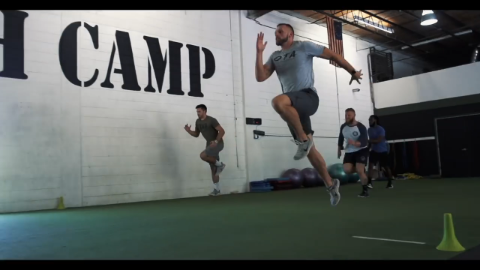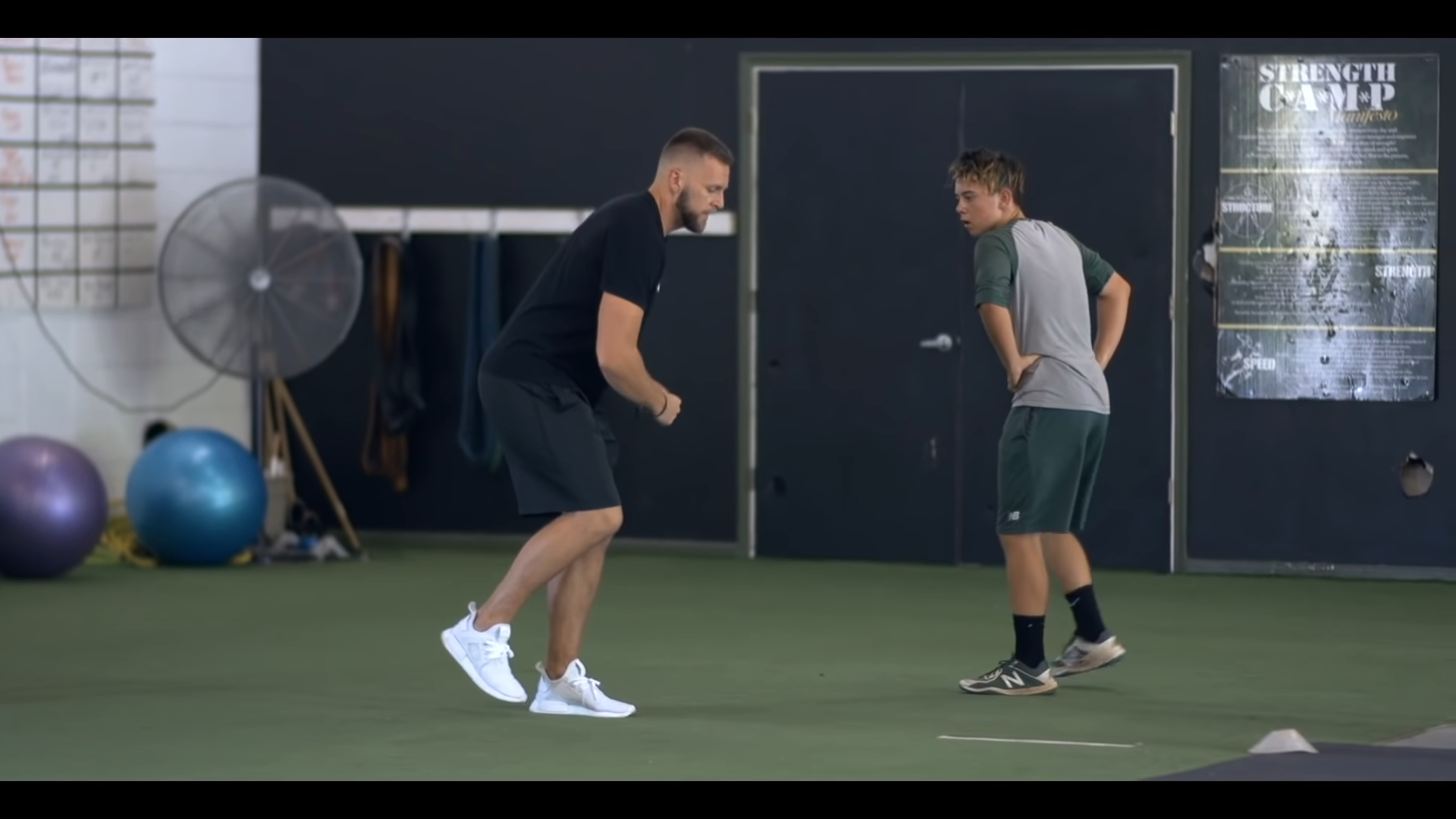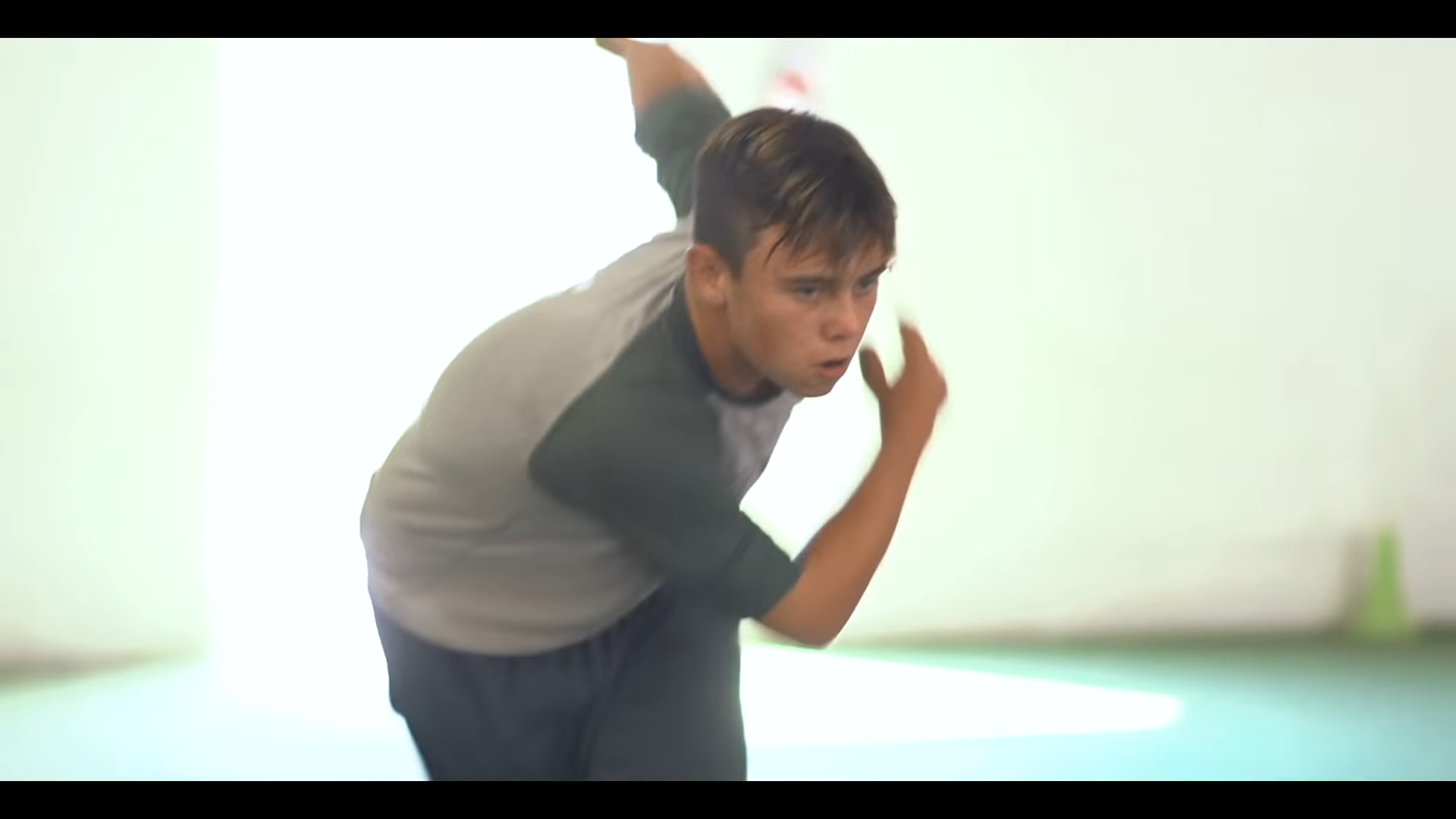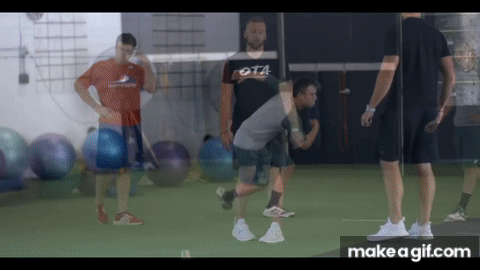One Plyometric Move to Increase Your Pitching Velocity
There’s one kind of plyometric everybody neglects in their pursuit of more athleticism, but adding this specific move to your arsenal can improve your change of direction, increase your pitching velocity, and make you more agile.

See, while guys are doing broad jumps, box jumps, even bounds to increase their explosiveness… They’re ignoring an entire facet of the force production ability.
And again this facet has huge implications on their athleticism
Before I share the missing piece, the piece that can increase your pitching velocity, I want to share a story:
The Athlete Who Increased His *CENSORED* Broad Jump By A Foot
Other day, I received a message from one of my coaching clients.
In just two months, he’d achieved shocking results.
Some might even call them staggering…
And his competition, might call them scary.

What did he achieve? Well he achieved a laundry list of things such as a significantly increased squat, bench, and deadlift… Plus a few other notables…
But, by far, his most impressive achievement was his one foot increase in broad jump.
Not just any broad jump…
But his lateral broad jump.
The funny thing with the lateral broad jump is that it’s not really used by many coaches, but it can have huge implications on your performance.
For example, your ability to juke a defender is increased by elevated lateral force production.
Or, if you’re a basketball player, it can boost your speed in your defensive stance.
And, if you’re a baseball player, the implications are even bigger. Because lateral force production shines in two key areas:
1. Your speed out of your 60 stance
2. Your throwing velocity
In the case of the 60 stance, elevated lateral force production ability will help you build up to your top speed as quickly as possible, effectively cutting down your 60 time. Obviously, this carries over to your speed when running, or stealing, bases.

In the case of throwing velocity, or increasing pitching velocity, the lateral broad jump requires an athlete to produce force in the same motion he’d drive off the mound with. So, provided pitching mechanics remain the same, an increase in lateral force production should increase pitching velocity.
And my coaching client increased his by a foot… Which means he probably experienced a big jump in his pitching velocity.
How to Perform The Lateral Broad Jump
Since the lateral broad jump is so underused, I figured I’d take the time to share how I teach it.
First, the athlete faces an object perpendicular to the target destination. In my gym, it’s the wall perpendicular to the turf.

From there, he bears his weight on his leg that’s farthest from the target destination.
Then he’s going to slightly load his hip and push off the back leg laterally.
This is where it gets tricky.
While the athlete is in the air, he’ll rotate his body to face forward, and land on two feet.
It should look something like this:
How to Integrate The Lateral Broad Jump
Now, just working the lateral broad jump alone won’t increase your pitching velocity.
You must progress the stimulus you hit you body with to continuously increase your lateral force production capacity, which means the lateral broad jump must be progressed (made more difficult) to continuously see gains in the lateral force department.

In addition, you must increase strength in the musculature that supports you in moving laterally. Some simple exercises like lateral lunges can help, but there are also more complex exercises that I use with my baseball players that give them the ability to generate more force laterally.
You can find a simple progression for more lateral power at the link below:
